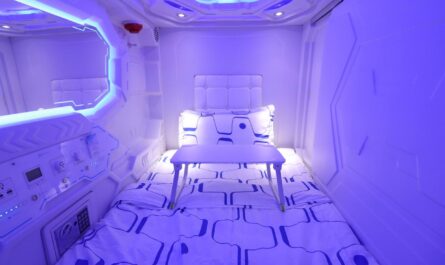Understanding Autopilot Systems
With the increase in air travel over the past few decades, autopilot systems have become an essential part of aircraft navigation and operation. These advanced automated systems help relieve pilot workload and improve flight safety. However, autopilot is not completely autonomous and still requires pilot supervision and intervention in many situations. In this article, we will explore the working of autopilot systems, their benefits and limitations.
How does an Autopilot System Work?
An autopilot system consists of flight controllers, autopilot computer, servomechanisms and various navigation sensors. The flight controllers receive inputs from the autopilot computer regarding the desired aircraft parameters like altitude, heading, airspeed etc. Based on these commands, the servomechanisms automatically adjust the flight controls like ailerons, elevators and rudder to maintain the aircraft in the desired flight path.
The autopilot computer receives navigation data from sensors like Inertial Reference Systems (IRS), Air Data Computer (ADC) and Global Positioning System (GPS). The IRS provides aircraft attitude and velocity information. The ADC measures airspeed, altitude and other air data parameters. GPS gives the aircraft’s precise location and navigational data. Based on the inputs from these sensors, the autopilot computer calculates error signals and issues correction commands to the flight controllers.
Most autopilot systems have multiple modes of operation to help pilots in different phases of flight. The basic modes are Heading mode, Navigation mode, Altitude Hold, Airspeed Hold and Glide Slope mode for approaches. More advanced autopilots also have features like Automatic Take-off, Coupled Approach and Autoland capabilities. By engaging different modes, the autopilot can automatically control and manoeuvre the aircraft as commanded by the flight management systems.
Benefits of Using Autopilot Systems
Reliability and Consistency: Autopilots perform precise manoeuvres repeatedly and do not get fatigued like human pilots. This ensures higher reliability and consistency in aircraft control and navigation.
Reduced Workload: Autopilots can automatically fly and navigate the aircraft for long periods, freeing up pilots to focus on other flight duties, communications and monitoring systems. This reduces overall cockpit workload.
Improved Safety: Autopilots minimise human errors like over controlling or becoming spatially disoriented during flights in bad weather or at night. They can recover the aircraft from potential unsafe flight attitudes faster than humans.
Better Efficiency: Autopilots allow optimised cruising at altitudes and airspeeds for minimum fuel consumption. Features like coupled approaches help perform stabilized instrument approaches which improves operational efficiency.
Compliance with Regulations: Modern autopilots enable aircraft to fly Required Navigation Performance (RNP) approaches and meet other operational requirements set by aviation regulatory bodies.
Emerging Autopilot Technologies
Integration with Fly-by-Wire: Recent fly-by-wire aircraft have autopilots that are fully integrated into the flight control system for even tighter aircraft control and manoeuvrability. This allows complex flight envelope protections.
Advanced Sensors: Autopilots now get inputs from high-accuracy GPS, Inertial Nav Systems and Flight Management Computers for improved navigation capabilities. Terrain awareness sensors enable autoland on minimally equipped runways.
Digital Flight Control: Advance digital computers and software based flight control logics provide features like Automatic Take-off, Coupled Approaches, Hold Functions for 4D navigation trajectories. Integration with Flight Management Systems is enabling complex 4D profile flights.
New User Interfaces: Modern autopilots employ touch screen interfaces with graphical displays for improved situational awareness and simplified PILOT-AIRCRAFT interaction. Voice control is being explored for certain functions. Autothrust capabilities are also getting integrated.
Artificial Intelligence: Research is ongoing to develop more autonomous flight capabilities using machine learning, computer vision and AI algorithms. Future “Intelligent Autopilots” may have capabilities like conflict detection and automated obstacle/ terrain avoidance.
Limitations of Autopilot Systems
Despite advancements, autopilots are not a complete replacement for human pilots as they still require active monitoring, intervention and decision making by pilots in various non-normal situations like:
– Severe Weather Avoidance: Autopilots cannot actively detect and avoid hazardous weather on their own. Pilots must still plan and reroute the flight path.
– Irregular Aircraft States: Autopilots may not be able to recover the aircraft in cases of major system malfunctions like engine failure, hydraulic failures etc. Pilots must take over control.
– Conflict Detection: Today’s autopilots lack autonomous conflict detection abilities or visual intelligence to identify potential collisions with other traffic or terrain. Pilots must still actively “see and avoid”.
– Decision Making: While autopilots can fly pre-programmed flight plans or profiles, they do not perform risk assessments, make complex operational decisions or handle contingencies on their own like diversions, alternates etc.
Thus, while autopilots have greatly enhanced aviation safety, current systems have limitations that require the essential human cognitive capabilities of decision making, problem-solving and visual intelligence particularly during non-normal or uncertain situations. The pilot remains the final authority for the safe operation of any flight. As autopilot technologies continue to evolve, balancing their capabilities with critical human oversight will remain an important factor.
In summary, modern autopilot systems have become an indispensable part of aircraft navigation, allowing pilots to efficiently and safely manage the complex tasks of flying. Their usage has led to increased reliability, reduced workloads and improved regulatory compliance. Advancements in integration with aircraft flight control systems and sensors are enabling more autonomous capabilities. However, current autopilots still rely on pilots for critical judgment, planning and monitoring. Continued development aims to further automate routine functions while ensuring pilots retain overall strategic and tactical control of flights as the final responsible authority. Autopilot technologies will undoubtedly continue to revolutionize air transport, but achieving complete aircraft autonomy may still be a long way off.
Note:
1. Source: Coherent Market Insights, Public sources, Desk research
2. We have leveraged AI tools to mine information and compile it




